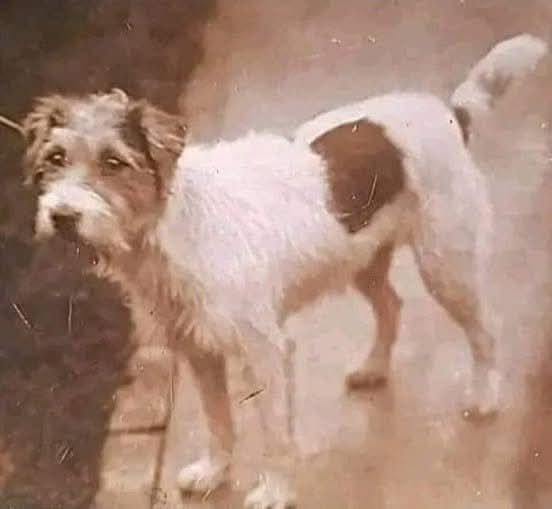The Remarkable Story of Gunner — War Dog, Companion, and Protector
In the waning months of World War II, among the roar of artillery, the whistles of bombs, and the urgent radar warnings, there was a silent hero working in the shadows — a dog named Gunner. My uncle was part of an anti-aircraft gun crew stationed on the front lines. One day, he came across a young dog, thin, wary, and yet unafraid. He brought that dog home to his unit, naming him Gunner, and over time the dog became far more than a mascot or companion. He became one of their greatest assets.
Arrival and Adoption
When Gunner first showed up, he was small and uncertain. The men on the crew barely knew what to make of him. But my uncle — ever the compassionate one — began quietly feeding him scraps, sharing rations, offering safe corners by the gun emplacement. As days turned to weeks, Gunner’s presence became accepted and encouraged. He curled up under the anti-aircraft gun itself, sleeping in the shadow of the machines that roared overhead. The gun crew, many of them young men far from home, shared their own meager supplies to feed him. Soon, he was part of the unit in body and spirit.

A Dog Learns the Skies
By the time he was about 18 months old, Gunner began to show uncanny behavior. He would rise from sleep and stare upward at the skies. The men joked at first. But then they noticed a pattern: if Gunner simply lay back down, all was quiet; if he grew rigid, bristled, ears pricked, hackles raised — they knew an enemy aircraft was approaching. They trusted him. In environments where split seconds mattered, Gunner became their built-in early warning system.
My uncle often said Gunner learned to distinguish the roar of German aircraft from all other noise. He swore he never got it wrong. Whether the plane’s engine, the shifting wind, or the faint echo of propellers — Gunner read them all. He would alert the crew before the radar or scouts might pick up the intruders. In a time when technology was limited and lives were always on the line, Gunner’s instincts helped save countless lives.
The Bond of War
Inside the bunker-like vicinity of the anti-aircraft installation, the gun crew and Gunner grew close. Emergency alarms, the thunder of shells, the clamor of orders — all became part of daily life. But through it all, Gunner was steady. He slept where the gun’s shadow lay, curled near the crew when they rested, alert when they remained tense. He was not merely an auxiliary: he was family.
There were nights when the skies were still and silent — yet Gunner lay perky, ears up, posture taut. The men would whisper: “Better safe than sorry.” And many times, mere minutes later, the distant drone of engines would grow loud, and the crew would scramble — thanks to his warning.
Legacy and Memory
Decades have passed since those restless wartime nights. My uncle, now gone, never worked to publicize Gunner’s legend. The story lived quietly in family lore, shared by word of mouth, nearly forgotten by time. As years wear on, so do memories. I am probably the only one left in the family who truly recalls every detail — many small moments that seemed ordinary then but have grown extraordinary in hindsight.
So I tell this story now: of a dog named Gunner, born amid war, raised among gun barrels and trenches, learning to read the skies as skillfully as any human. He was more than a war dog; he was an ally, a guardian, an unspoken hero.
I want to preserve his memory — not as a footnote, but as proof: sometimes the most remarkable protectors have fur and paws, not steel and circuits. I hope you find in his tale a spark of wonder, a reminder of the deep bonds that can form even in the darkest times.
Thank you for reading — and for keeping alive the story of Gunner.